What size trampoline is best for me? Our expert advice will help you make the right choice
If you're trying to decide what size trampoline is best for you and your space, our professional guide will help you to make the right choice


If you're wondering what size trampoline is best for your backyard, help is at hand with our expert guide. There are so many shapes and sizes of trampoline to choose from and each one is designed for a different purpose and age group. So we've made it easy for you to decide which one is right for you with our super simple guide.
When choosing what size of trampoline to go for, first you need to consider the size of your backyard and how much space is available, plus determine who exactly will be using the trampoline. In general, the bigger the trampoline, the better it will be if you're planning on several people using it.
By spending the time working out what is best for your garden, you can be sure that you'll choose the best trampoline for your space and needs.
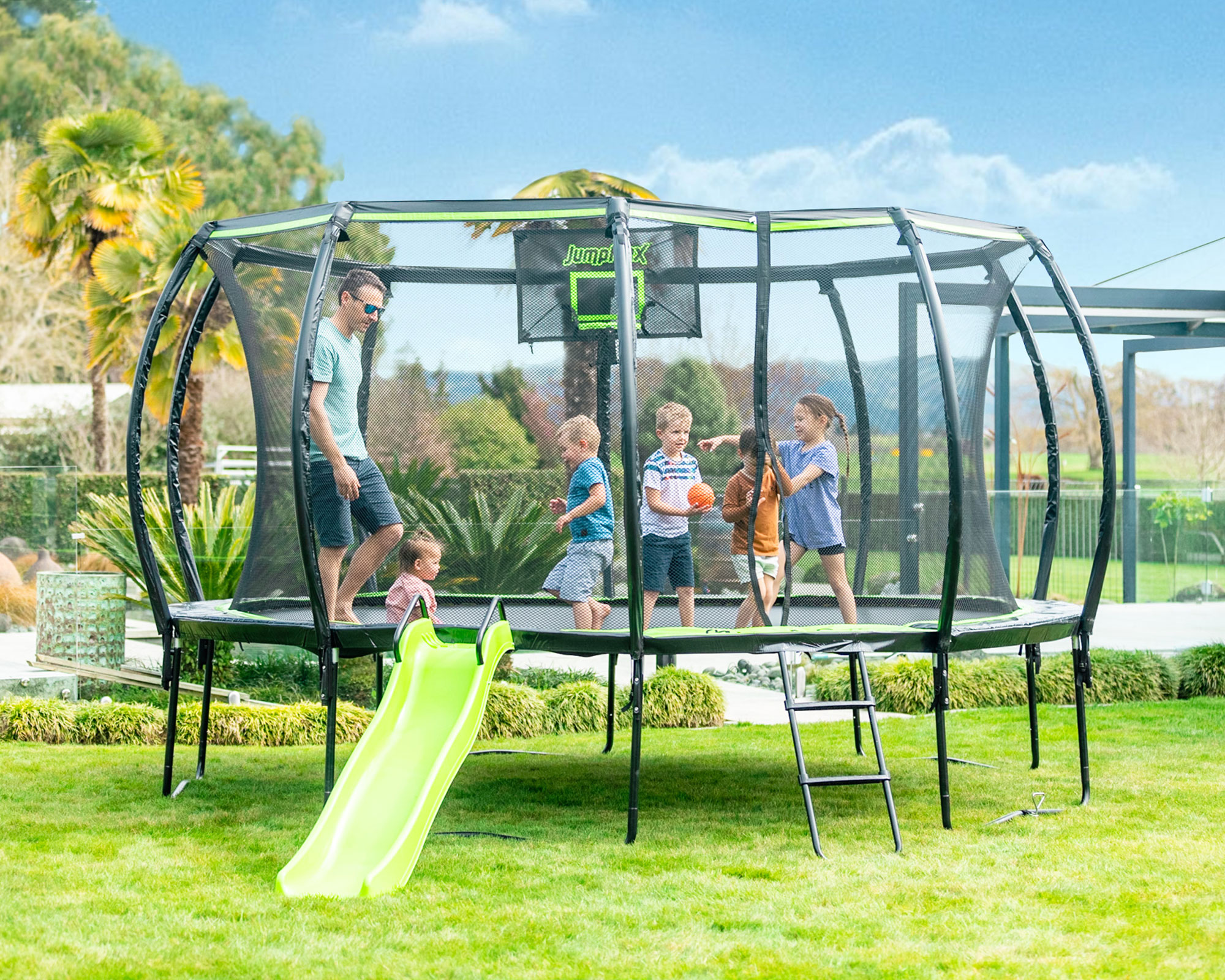
The more the merrier with this spacious style
What size trampoline is best? 4 key things to consider
'While budget and trampoline safety features are critical, first and foremost you need to know that there is enough space in your garden for the right trampoline for your household,' says Malcolm Phillipps of Jumpflex.
Here are the top things to consider when deciding what size of trampoline is best for your yard.
- Trampoline shape 'One of the biggest variables in trampoline design is the shape,' says Malcolm Phillipps. 'Traditionally trampolines were all rectangular but now round trampolines are the most common shape. The circular frame is very strong and easy to manufacture and fits well into different shaped yards, as you can get a range of sizes. A rectangular trampoline is still an option, and can fit into longer, thinner yards. You can also find trampolines with octagonal and elliptical shapes.'
- Age suitability Think about how old your children are and who exactly is going to be using it and for what purposes, whether that's fun or fitness. 'Ask whether the trampoline is just for one or two small children, or will teenagers and adults be enjoying it too,' says Malcolm. 'The more people using your trampoline and the bigger they are, the more you should consider a larger trampoline, with a larger weight rating.'
- Space considerations Most importantly, will the trampoline fit into your yard? How big is your garden play area and do you have enough space to walk around your trampoline and get on and off it safely?
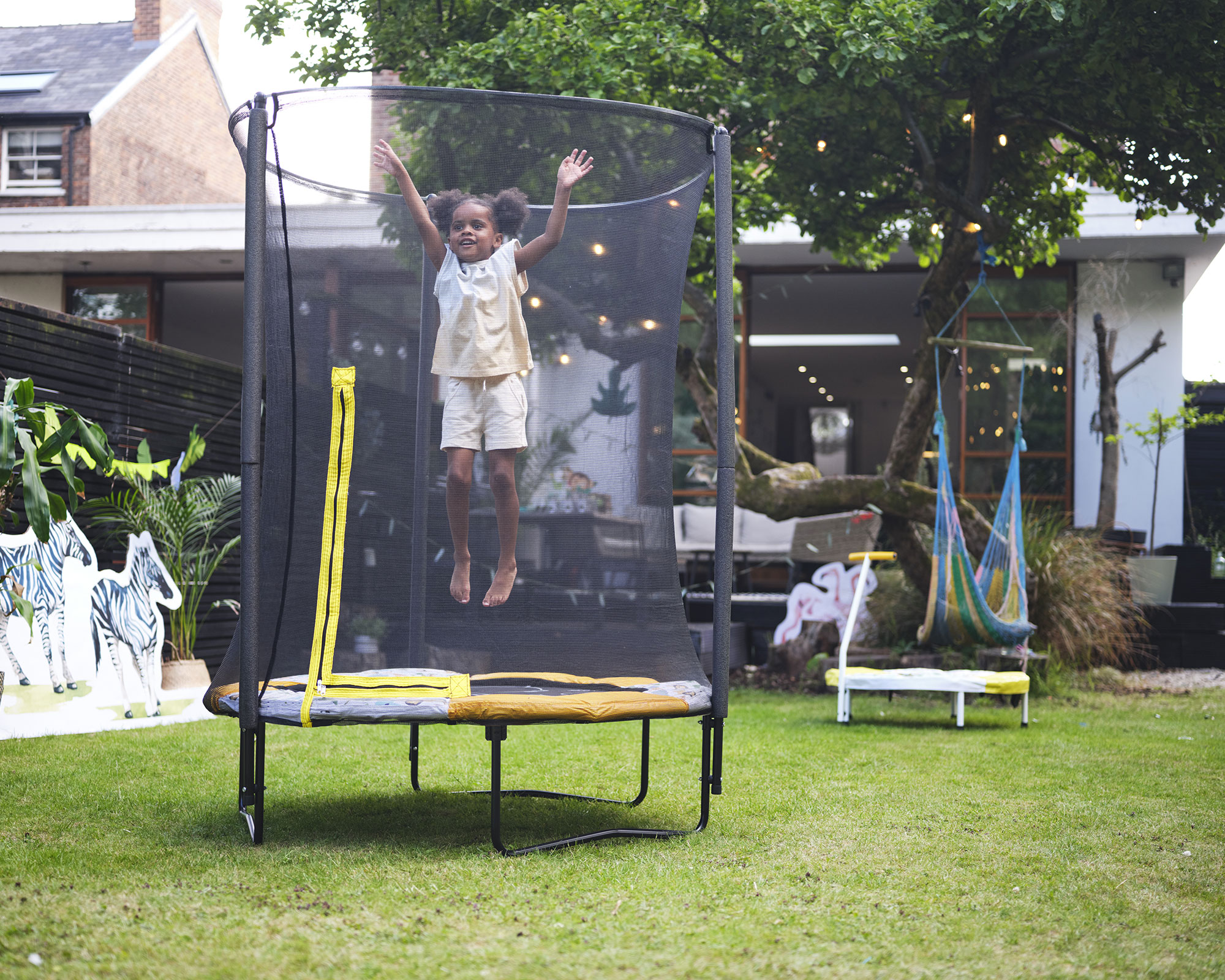
Safety nets are a good idea for younger children
What are the different trampoline sizes available?
Trampolines typically range from 6ft to 14ft+. Common backyard round trampoline sizes are 8ft, 10ft, 12ft and 14ft, which relates to their frame diameter. 'The size of a trampoline is usually determined by either its length (in the case of a rectangular trampoline) or its diameter (when referring to circular design),' explains Malcolm Phillipps.
'The two measurements that matter most are the area of the frame, including any safety poles that might curve out from the frame, and the area of the jumping mat.'
What is the best-selling size of trampoline?
Typically, the most popular sizes tend to be either a 10ft or 12ft trampoline design, as this ensures plenty of jumping space on the mat.
'The best-selling size of trampoline is a 12-foot round trampoline,' says Oberon Copeland, who is based in Phoenix, Arizona, and is CEO of veryinformed.com. 'Trampolines of this size provide plenty of space for bounce and are ideal for families with small children.
'In addition, they are easy to set up and take down, making them a great choice for those with limited storage space. Round trampolines also tend to be more affordable than other shapes, making them a wise investment for budget-minded shoppers. Whether you're looking for a fun garden activity for kids or a way to get in shape, a 12ft round trampoline is a great option.'
'One of the most popular trampoline sizes is 10ft, which is generally safe for both kids and adults,' says Rex Freiberger, CEO of Gadget Review. 'Larger trampolines, such as 12ft and 14ft varieties, are even safer for kids, but you have to be sure your space is large enough to accommodate them. Experts generally agree that you need a margin of 8.2ft around a trampoline if you aren't using a safety net, as this margin greatly reduces the risk of injuries from falls.'
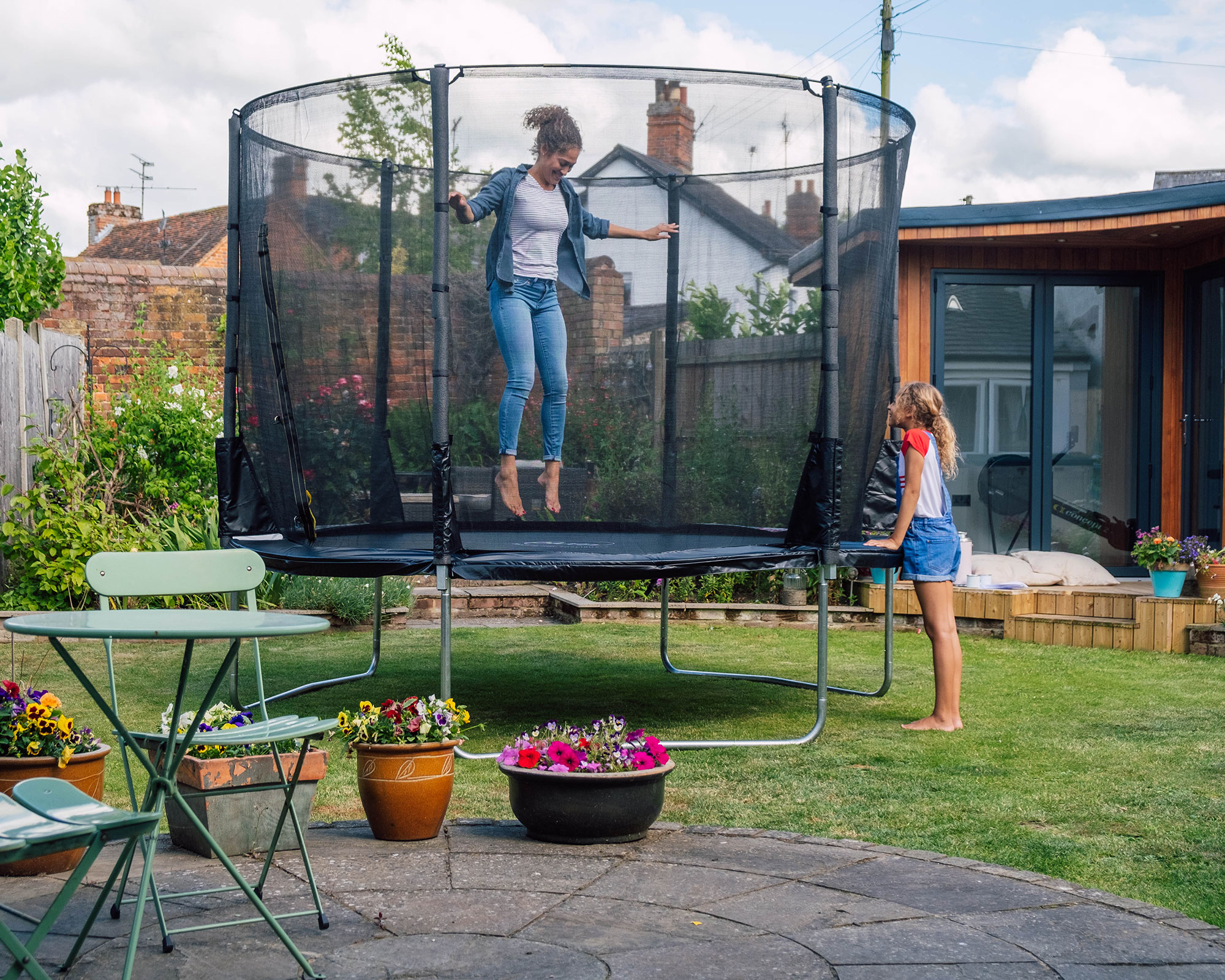
What size trampoline is best for toddlers and young children?
'For toddlers, a small trampoline with a diameter of about 3-4ft is ideal,' says Gerry Bernstone, health and fitness officer at MarketPlace Fairness. 'For young children, a trampoline with a diameter of about 5-6ft is a good size, as they will be able to use it for a longer period of time.'
Look out for beginner trampolines for young children. ‘Junior trampolines are specially designed for first-time jumpers,' says Paul Schaffer, MD at outdoor toy brand Plum Play. 'Frames are low to the ground so kids can safely get up and off, and springs provide a controlled bounce as jumpers gain confidence trampolining.’
In the US, we like the look of the mini round trampoline from Springfree for young children, as it's 6ft in diameter and comes with a handy enclosure. And in the UK, the Chad Valley 6ft trampoline and enclosure from Argos has a 5-star rating from reviewers and comes with a two-year guarantee.
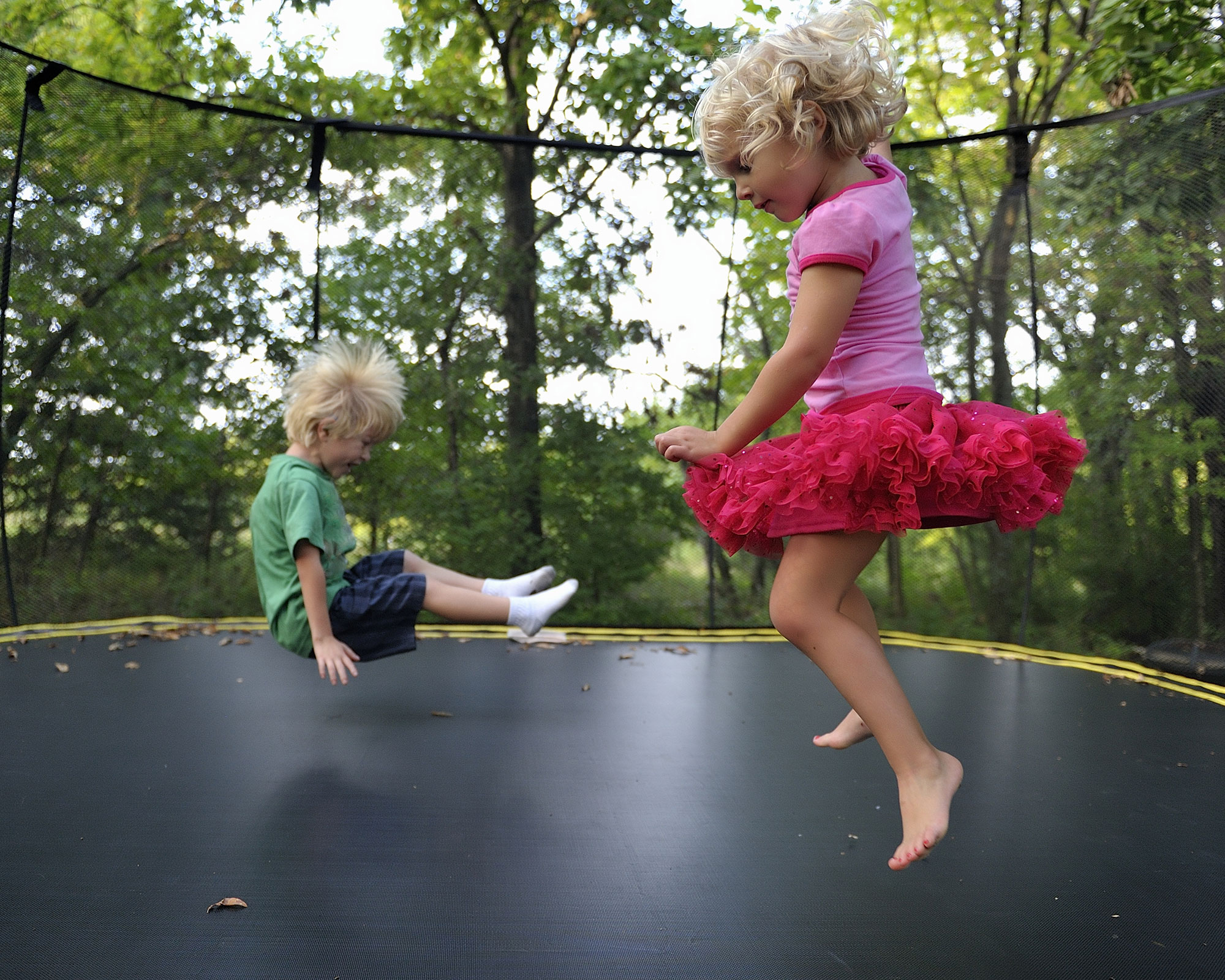
First time jumpers need plenty of bouncing space
What size trampoline is best for pre-teens and teenagers?
‘Any trampoline that is 8ft+ is ideal,' says Paul Schaffer. 'The Space Zone II Evolution from Plum Play is a great option for teenagers. This trampoline uses special technology to separate the jumper from the springs and metal parts, whilst maximising the jumping space with a patented enclosure net. It also has a patented telescopic enclosure, allowing you to pack down and cover the trampoline in seconds when not in use, making it great for parents who prefer a discreet trampoline design.’
'Teenagers and adults should use a trampoline with a diameter of at least 7ft, as they will be jumping higher and faster,' adds Gerry Bernstone.
'I have a 10ft trampoline in my garden,' says Gardeningetc's editor Beth Murton. 'Although I bought it a few years ago, it's still a really good size for my two kids, who are now aged 12 and 8. There's plenty of bouncing space for them to be on there at the same time, even as they have got bigger. The Infinity Octagonal trampoline from TP Toys is a very similar design to mine.'
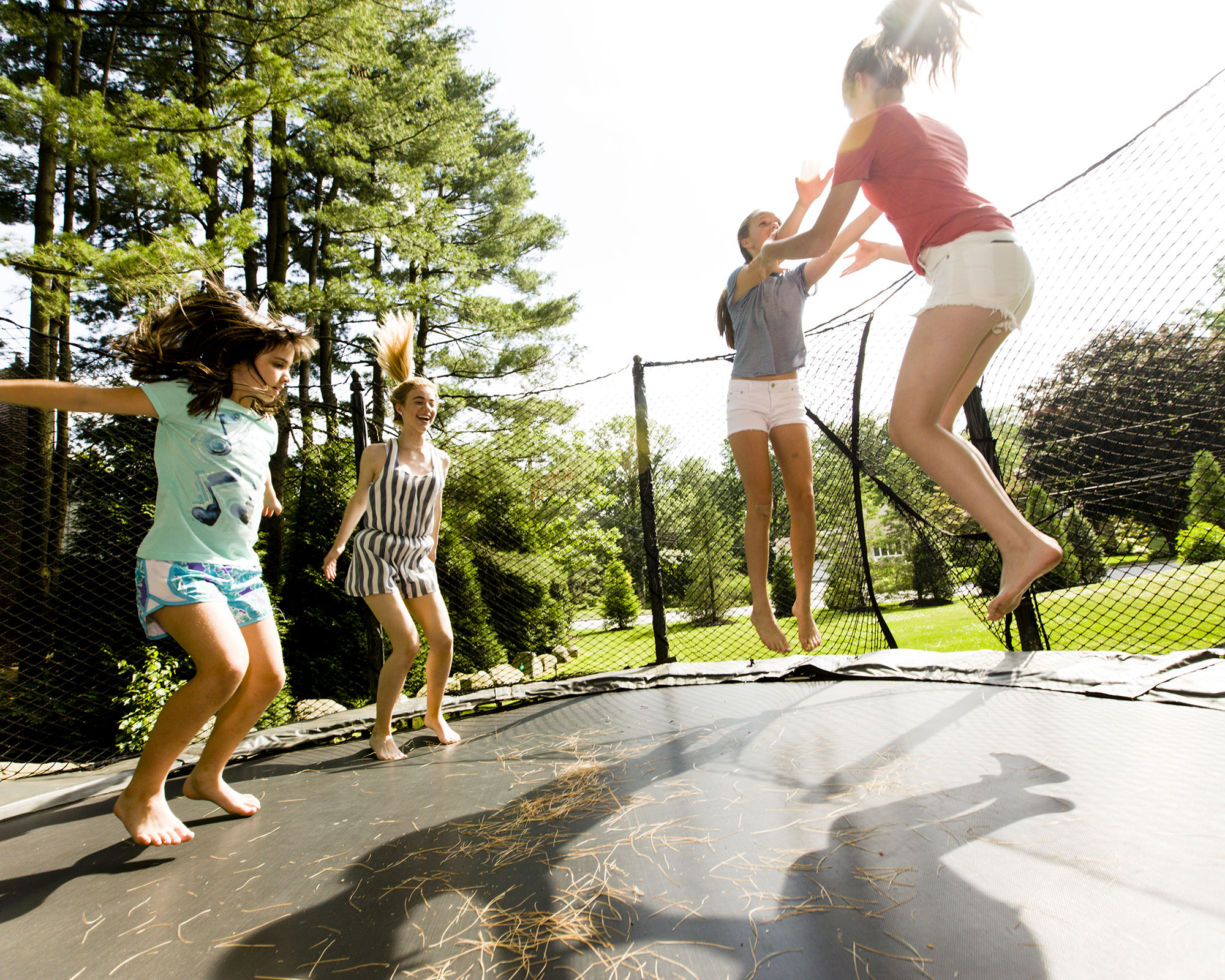
Teenagers will be more daring so make sure they're safe
What size trampoline is suitable for adults?
Trampolining is an excellent form of exercise for keeping fit so adults should consider bouncing too.
‘Trampolining isn’t just for the kids,' says Paul Schaffer. 'A trampoline like Plum Play's The Bowl supports users up to 120kg, so is an excellent choice for adults. This trampoline revolutionises the traditional flat bed, transforming the jumping mat into a new curvilinear form, with trampoline walls just like you would find at a trampoline park.'
In the US, the Air 16 Sport HD from ACON would be ideal for both older kids and adults thanks to its large size. In the UK, the TP Genius 14ft Round Trampoline or the TP Infinity Leap 2 level Trampoline, both from TP Toys would be smart choices if you have the space available. They both offer plenty of jumping space and have a high maximum user weight.
What size trampoline will work well in a small garden?
There are plenty of options if space is tight. ‘Even if your garden has a small footprint, your kids can still enjoy trampolining fun,' says Paul Schaffer. 'Look for a junior range from 4.5ft to 7ft for ages 18 months to 3 years+.'
If you don't want a large trampoline frame in your garden, you can get an inground trampoline. 'These trampolines need sinking into the ground,' says Paul. 'You can position and plant them in your garden, so they are barely visible.' You can read more about the pros and cons of above ground vs inground trampolines in our dedicated guide.
When choosing a trampoline for younger kids or for fitness purposes, an indoor mini trampoline, available from Amazon, that you can take outside on warmer days may be the best option, especially if you don’t have the outdoor space to have a large trampoline.
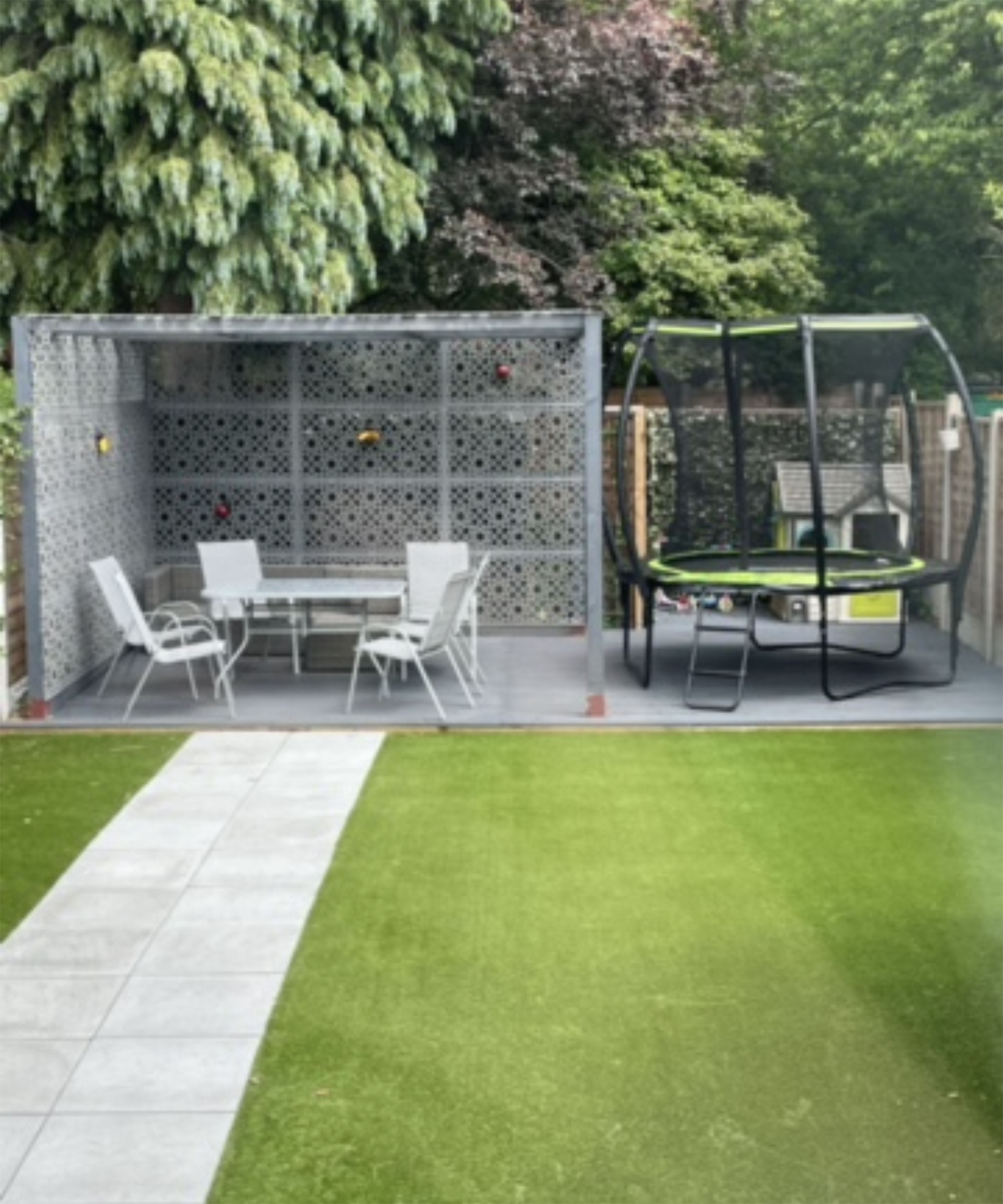
Trampolines can be worked into even the smallest yards
How much space do I need to leave around a trampoline?
'You should allow for the footprint of the trampoline (the frame diameter), then if the trampoline has a safety net, it can flex, so allow for an additional 3.2ft of free space around your entire trampoline,' explains Malcolm Phillipps. 'We recommend marking this out with a tape measure in your garden prior to making your purchase.'
Remember your trampoline needs to be safe to use, positioned on a level surface with enough space either side to make it safe and comfortable to get on and off. It also needs to be away from trees and if possible on grass or another soft base.
And don't forget about the space you might need for additional trampoline accessories too, such as ladders, basketball hoops and even tents to go over the top of the trampoline itself.

Lifestyle journalist Sarah Wilson has been writing about gardens since 2015. She's written for Gardeningetc.com, Livingetc, Homes & Gardens, Easy Gardens and Modern Gardens magazines. Having studied introductory garden and landscape design, she is currently putting the skills learned to good use in her own space where the dream is establishing a cutting garden.
